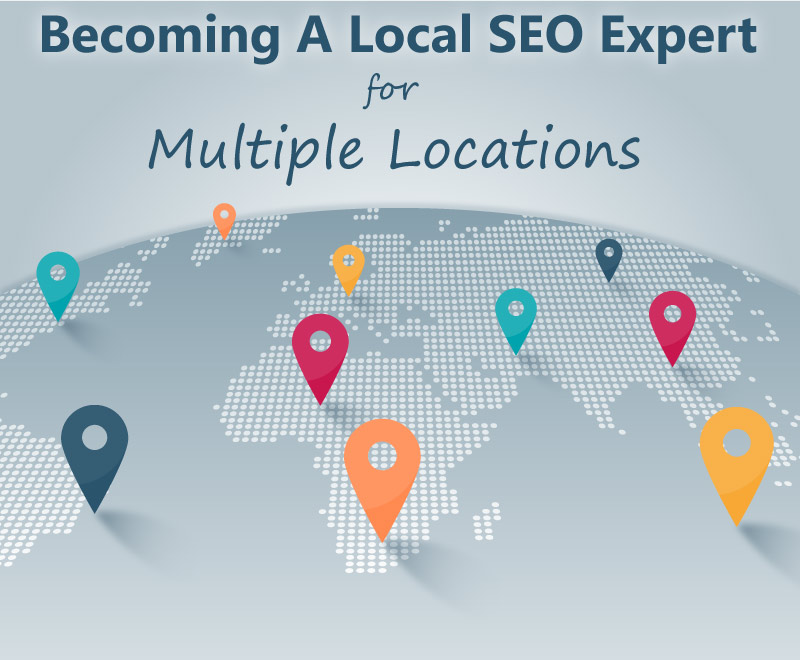
When an organization expands its reach to multiple locations and states, executing a local SEO strategy becomes just as important as any other promotional marketing. Between the ever-changing mobile landscape and Google’s local search algorithm dubbed Pigeon, it can be difficult to know exactly what strategies your business needs to implement to stand out in Google’s local search results.
I’ve seen organizations either thrive or die by their execution of this increasingly important strategy. But fear no more! This guide will show you some of the best resources and tactics to take your local SEO from a mule to a unicorn.
Becoming A Local SEO Expert Starts with Google My Business Locations
Google My Business Locations is the very first step to establishing a presence in a new market. All you need is a valid Gmail account to create up to 10 different locations that span across mobile, maps, and, Google’s desktop search results. The best part of all . . . it’s free.
Google even provides an easy-to-use Excel template that lays out what information is needed to confirm the locations and get them indexed. I’ve provided an example of that below.

Top Level Domains Vs. Subdomains
One of the biggest decisions you’ll need to make when expanding your reach to new territories and countries is whether to create a top-level domain or a subdomain for each location. If you’re not quite sure what that means, HalfElf.org, a WordPress Guru site does an excellent job of explaining the differences between the two. You can find that here.
As Matt Cutt describes in the video below, creating top-level domains is preferable when moving into other countries with different languages. He also makes a point of warning webmasters about auto-translating the same content across those domains. This type of auto-generation has a very good chance of being penalized and should be avoided.
If you’re planning on establishing your organization in a new market with a new language, hire someone who can generate natural content specific to that region. If you’re planning on staying closer to home, you can use subdomains as a less expensive option.
Optimize Your Website for Each Location
Once you’ve set up a web presence for each region you’ll want to optimize schema for your various locations. Make sure to include a local number, local address, and business hours to increase your chance of being shown in Google’s SERPs. These should be unique for each location and need to be linked to either your top-level domain or subdomain for that area. You can find more information on localized schema at schema.org.
Google isn’t Everything
Although Google takes up 68.5% of desktop and 92.7% of mobile market share, they aren’t the only ones that can make an impact on your bottom line. In fact, using other business listings, review sites, and citation sources can improve your results within Google, doubling their effectiveness.
Here are a few resources to consider when expanding your presence.
- Yahoo Local Marketing: Yahoo offers a paid service that lists your business on over 50 websites within its network. They offer “Local Enhanced Listing” priced at $9.99 a month and “Yahoo Localworks” priced at $29.99 a month. This can be an excellent way to create high-quality backlinks, among other benefits.
- Bing Place For Businesses: Bing makes it easy to set up a local listing with their free service. The only requirement is to have a valid Microsoft account which is also available for free if you don’t already have one. Utilizing Bing’s local listings seems to be ignored by many companies, and can give you an advantage over your competitors who don’t know the value of this resource.
- Yelp: Yelp has become the premier review website not only for its ability to show up high within Google’s results but also as a trusted source for consumers. Establishing your location in Yelp and actively managing the reviews there can pay huge dividends to your business.
- Data Providers: Several different data resources are used by search engines in the United States. These include Factual, Infogroup, Acxiom, Neustar, and a few others like Yellow Pages and Superpages. These have a large impact on search results and feed directly into search engines, review sites, and more. Ensuring your business is listed on these and that the information is correct is extremely important for companies that want to be found locally. Moz has an excellent list of who these sites integrate with.
- Citation Resources: Each region will have different citation resources that you can take advantage of. Luickly Moz has done all the work for us, and provided a comprehensive list of the best citation websites to use for each metropolitan area in the United States. Most of the websites are redundant, but there are a few that are unique in specific areas. Take a look at that here.
Developing Localized Content
Having a content marketing plan for each location can drastically improve search results across all major search engines. Ensuring that your meta tags, URL, alt tags, and content all have the city and state included is an excellent way to localize content.
Making this content unbiased can be difficult, but using subtle tactics to promote your business works much better than shouting to the world that you are the best. Here are a few examples of article topics that can be used to help establish you as a resource locally:
- “Who is the best [niche/service] company in [location]?”
- “The top [niche/service] reviewed in [location]”
- “Where are the best [niche/service] in [location]”
A Few Extra Tips:
If you can do all of these things above, you are well on your way to becoming a local SEO expert. Here are a few more tips to help you on your journey of local search engine dominance.
- Make sure your websites are mobile-optimized
- Use companies like Whitespark, or Brightlocal to help you if you’re not feeling confident in your strategy
- Embed Google Maps for each location
- Manage Google, Yelp, and Social Media reviews
Much success,
Looking for more great reads? Check out these related articles:



